Posted by Alfred Rico on 2021 Nov 4th
Hunting Stocks Versus PRS-Style Competition Stocks
A decade ago, the distinction of choosing hunting stock or a competition stock would have been rather straightforward. On one side you had a small sleek stock with a classic design and two sling studs. On the other, you had beefy stocks with adjustable cheekpieces, length of pull, vertical grips, and wide forearms. Like anything in life, the division was never black and white because the stocks were an amalgam of designs taken from hunting, competition, and military influences. Today, the riches in materials such as fiberglass, carbon fiber, aluminum, and other composites offer shooters a greater variety of stocks that blur the lines between categories, hunting stocks now incorporate some competition features and competition stocks are light enough to be used for hunting.
HUNTING STOCK PAST
Regardless of the great variations in design, the classic hunting stock is still the underpinning blueprint of a hunting stock. The classic hunting stock design is characterized by a straight comb from the flute to the heel, a swept back pistol grip, a slim rounded forearm, and two sling studs. The straight comb keeps the eyeline close to the bore for the low riding optical sights and is in line with the recoil forces.

As telescopic sights became popular, rifle stock makers borrowed the Monte Carlo design from shotgun stocks and raised the comb and incorporated a pronounced drop heel. The benefit of this design is that the shooter's head so that their eye level is above the bore, and it keeps the butt pad low for easy shouldering when shooting from a standing position. Some manufacturers use this design, others don’t.
Typically, hunting stocks were designed to fit the average human body. They have fixed length of pull, fixed pistol grip angle, have top feed magazines, and sling studs. For shooters that were larger or smaller than average, they had to adapt to the rifle.
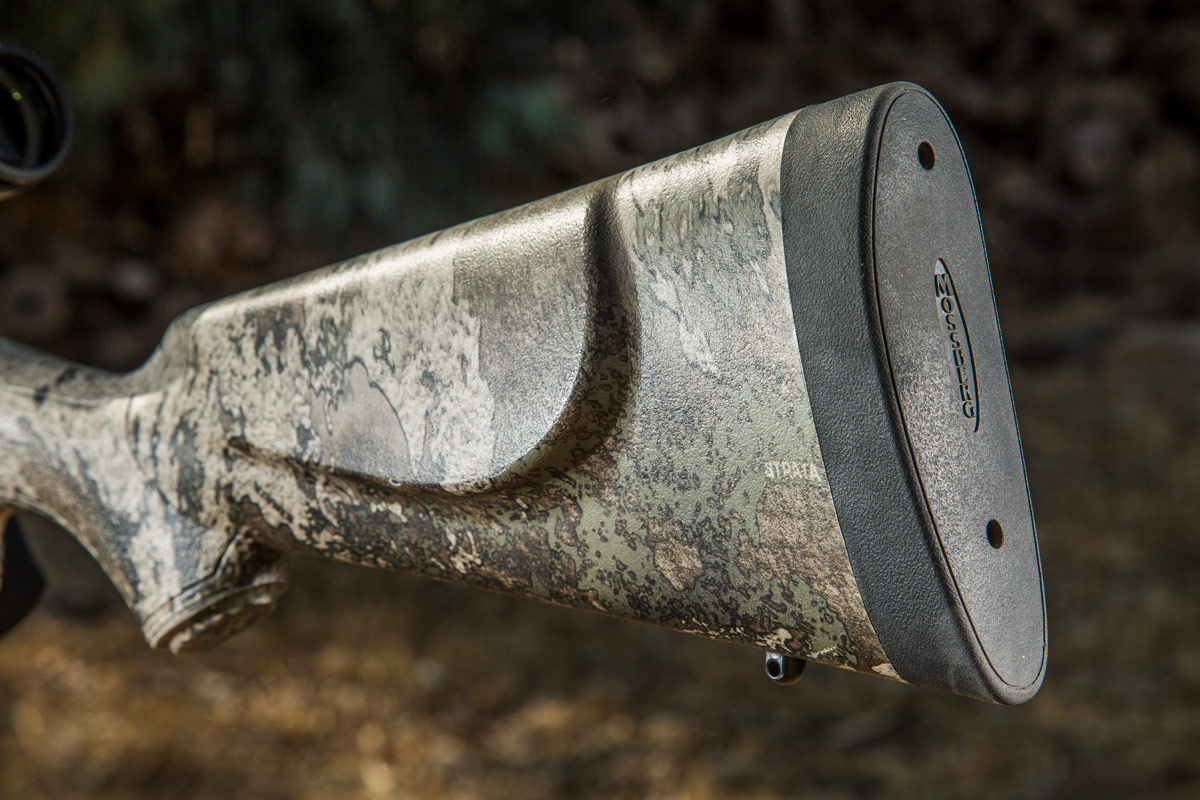
Over the years, stock makers have modified the comb, drop of the heel, length of pull, angle of the pistol grip to make a rifle shoulder smoothly, acquire game quickly, and handle recoil more efficiently. The classic design and its iterations are still popular and effective and can be found in most hunting rifle lines from Weatherby to Mossberg.
STOCK MATERIALS
Wood has long been the go-to material for rifle stocks. In the late 1950s, plastics became a viable alternative when Remington launched the first commercially produced rifle, the Nylon 66, with a synthetic stock. The use of plastic was to reduce manufacturing costs and therefore make the rifle more accessible to a greater portion of the population.
In the 1960s Chet Brown introduced the fiberglass stock to the shooting competition world. The advantage of fiberglass over a wood is that it is unaffected by water, humidity, cold, or heat. Wood will swell or shrink depending on the environmental conditions and cause a negative impact on the rifle’s zero hence affecting accuracy and precision. Fiberglass molded stocks are also lighter and stiffer making them more appealing for hunters seeking the lightest rifle for the longest adventure. Once fiberglass stocks proved themselves in the competitive shooting sports, they were seen as superior material than wood. What prohibits fiberglass becoming the standard synthetic material for stocks is costs. There is a lot of handwork involved all along the manufacturing process.
In the current market, synthetic stocks have all but replaced wood stocks, but not all synthetic materials are equal. Polymer injected molded stocks make up a mass share of stocks on factory rifles because they are the most cost effective to manufacture. Although they shrug off a soak in water, extreme heat can alter its shape. Polymer stocks are also flexible which undermines accuracy. Some manufacturers have addressed this in their designs or material.
Carbon fiber has come on strong into the rifle market within the last 10 years, offering a lighter and stiffer alternative to fiberglass. Carbon fiber is trickier to work with than fiberglass and it is why many of the early pioneers of carbon fiber barrels had extensive aerospace industry background, quite a few worked with NASA. A well-crafted carbon fiber stock can weigh as little as 20 ounces making it the ideal for those looking to shave every ounce from their rifles.
Aluminum can be used for a complete stock or to serve as an internal structure within a synthetic stock to provide rigidity and better mounting platform for a barreled action. The rifle that showed that aluminum is a great stock material is the modern sniper rifle, the Precision Marksman Rifle from Accuracy International. Developed in the mid 1980s, the designers were influenced by competition shooters and snipers. The chassis was manufactured out of a single piece of aluminum from forearm to buttstock and had polymer cladding. The Precision Marksman Rifle was so impressive that it was adopted by the British army who renamed it the L96A1 Sniper Rifle. This rifle influenced many of today’s chassis designers.
The advantages to using aluminum for a stock is that it frees manufacturers to design stocks in unique shapes yet remain stiff, lightweight and provide a solid foundation for the action that needs no bedding. It also allows them to go beyond the limitations of composites stocks and their multi-plied, thin-walled materials. The advantages pay off in their modularity, skeletonizing sections, offering many attachment points, greater fit, and development of specialized shooting accessories. It has also allowed them to integrate components like ARCA-compatible dovetails directly into the chassis which frees up space to expand the chassis’ utility.
An aluminum chassis can be the complete stock or serve as an internal structure within a synthetic stock to provide rigidity and better mounting platform for a barreled action.
PRS-STYLE COMPETITION STOCKS
Competition stocks are made from fiberglass, carbon fiber, aluminum, composites and a hybrid of these materials. What distinguishes them from a hunting stock is that they are more robustly built, allow the shooter to finetune the fit through adjustable buttstock components, have multiple attachment points for accessories, use vertical pistol grips, have a wide, flat forend, and use box magazines.
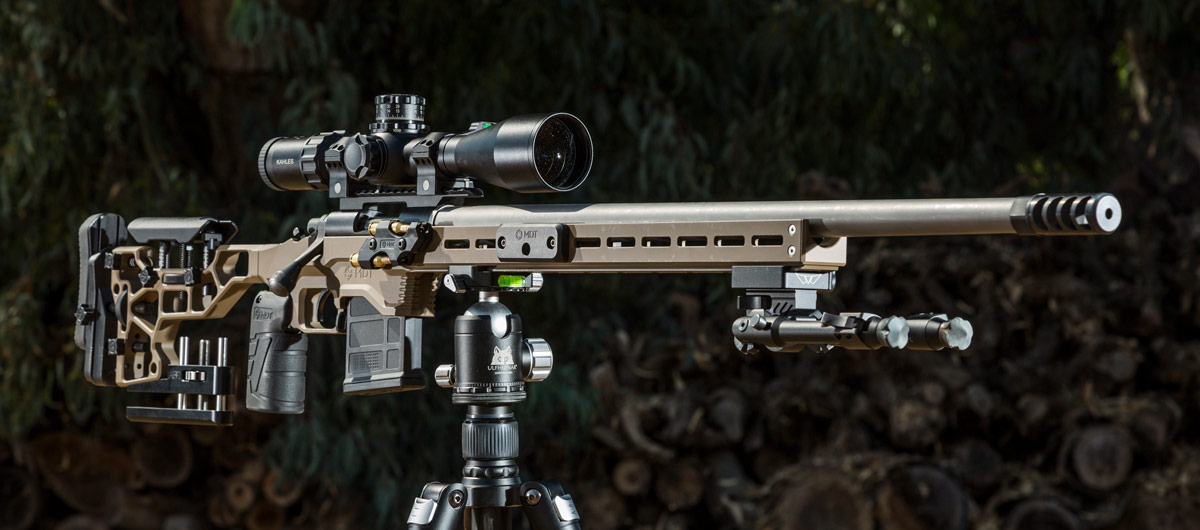
Since competition rifles aren’t designed to be carried far distances and only rarely shot off-hand, a bare bone stock will weigh 3.5 pounds or more. The length of the forearm depends on the utility the manufacturer envisions for the stock. It’s not uncommon for a competition rifle with scope and accessories to weigh between 12 and 23 pounds.
CHASSIS
For PRS-style competition shooting, chassis stocks are extremely popular. Their advantage over a composite stock is that they are highly modular, can be weight-tuned, don’t require bottom metal, and can be machined to accept a ton of accessories including mirage shields and night vision optics rails.
My MDT ACC chassis is a great example of a feature-rich competition chassis. Starting from the buttstock, the recoil pad has a steel plate for weight and can be adjusted up or down, the LOP has 13-14.5 inches of adjustment, and the cheek riser’s height extends 1.5-inches. What’s even better is that all these adjustments are toolless and can be done on the fly by turning a wheeled knob set screw. The stock also includes 2 sling mounts and an opening to add their .65-pound Buttstock Weight. The bottom of the stock is tapped to accept a bag rider.
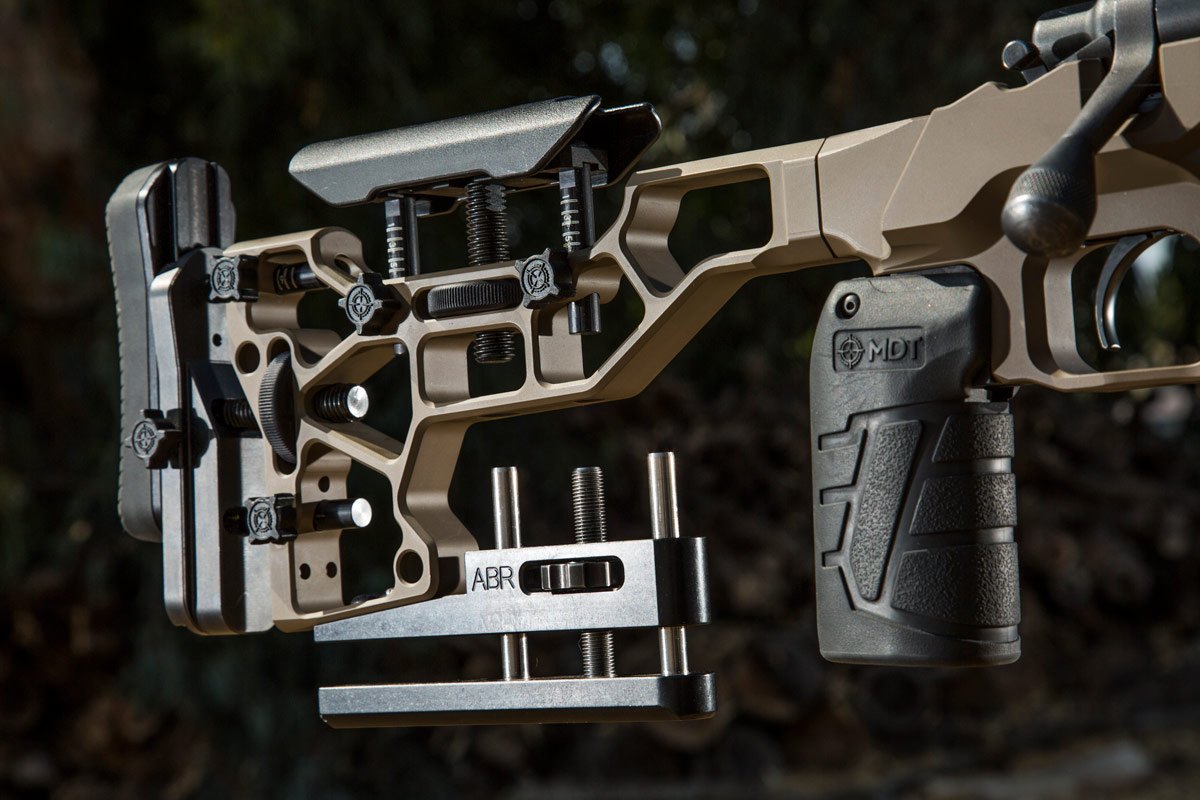
Another advantage of a chassis is that most have AR-15 compatible grips. This let’s a shooter install their favorite grip. The ACC stock includes MDT’s Vertical Grip Elite and is hard to beat for its customization. It can be adjusted fore and aft and at an angle for a highly personalized fit.
Since there is no need for bottom metal, chassis often have a slot cut into the trigger guard to allow access to trigger adjustment screws without removing the barreled action from the chassis. A chassis design also allows the magazine well to be scooped out for quicker mag changes. It’s also common for the front of the magazine well to serve as a barrier stop. This is beneficial since it shields your magazine from contacting a barrier and causing a failure to feed.
One of the common trends lately is tap holes on the side of the chassis body to attach extra round holders, data card holders, thumb shelves, and even finger stand offs.
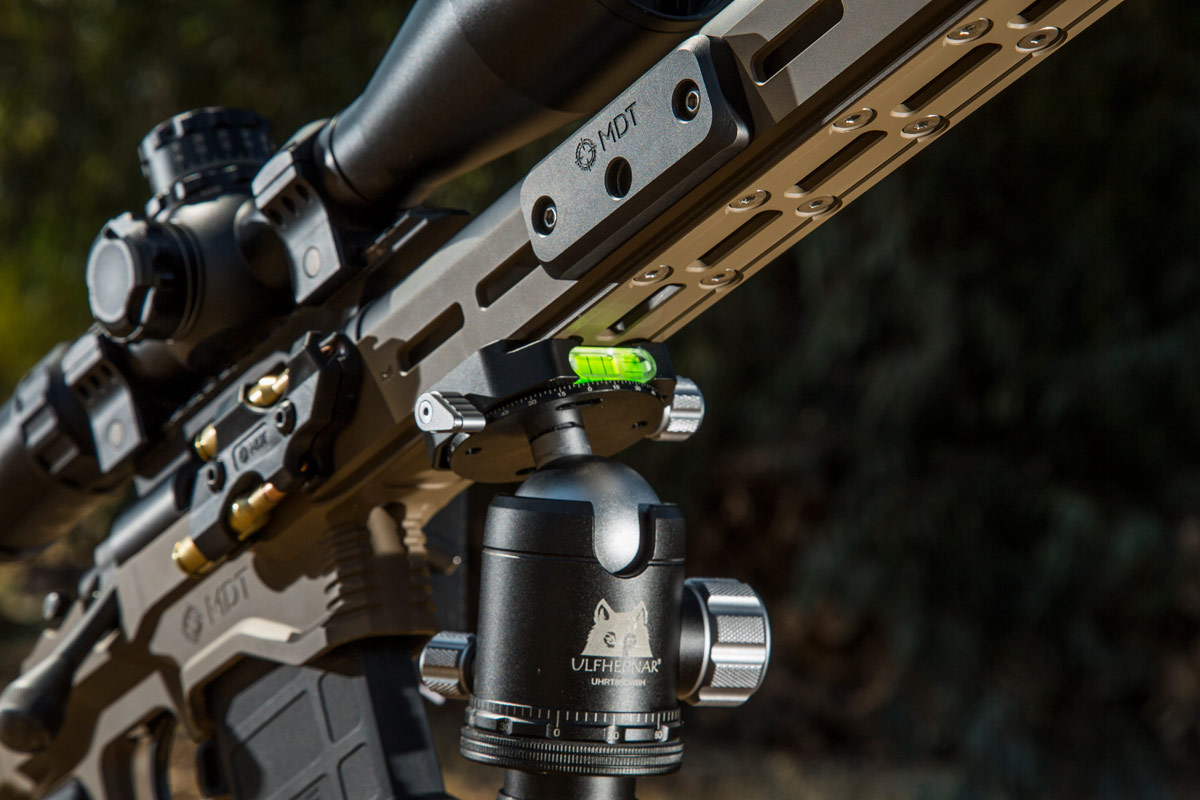
Forearms have changed greatly too; they now are multi-functional. With the popularity of the ARCA compatible dovetail, integrating it within the forend freed up the space to keep M-LOK slots on all sides of the forend and add features like top mounted night vision rails and mirage shields. Overall chassis have brought a whole new level of customizability and usability to the game.
HYBRIDS
As though the current stock designs weren’t enough, there are also hybrid stocks like the KRG Bravo, MDT XRS, Magpul Hunter, and recently released MDT HNT26 stocks which set a partial chassis and into a synthetic stock. Some are designed for hunting and competition; the MDT is designed specially to be a lightweight hunting stock. These stocks feature an internal chassis body and build the exterior out of polymer or carbon fiber. In the case of the HNT 26, the internal chassis is made of magnesium, which is lighter than aluminum, and a carbon fiber forend, stock, and grip.
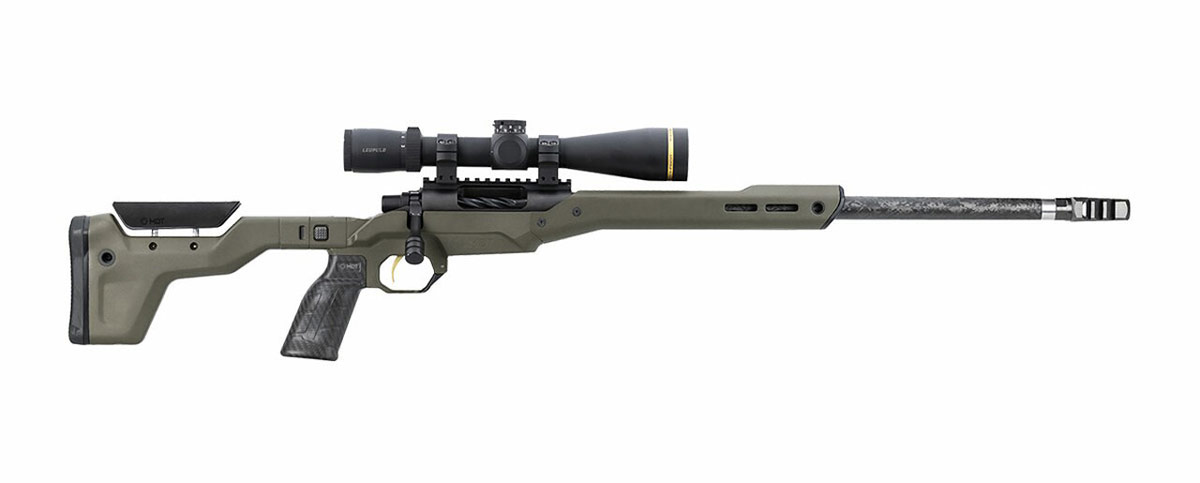
By using a partial chassis, the stocks provide a rigid platform where it is most important for the ultimate accuracy and consistency. These stocks all have adjustable buttstock components, a few M-LOK slots on the forend, and use a box magazine.
HUNTING OR COMPETITION
With long range being a craze for hunters and competition shooters alike, competition stocks are having a larger influence on today’s hunting rifles. Although hunters will continue to prefer lightweight agile rifles, they will seek stocks with features that will make it easier to shoot long range. We see it in the market today, with many rifle companies offering long range versions of their popular rifles. These rifles include stocks with adjustable length of pulls, cheek risers, and longer forearms with flatter profiles. Some are even incorporating M-LOK slots into the forearms of their synthetic stocks.
Custom stock manufacturers like McMillan and Manners have long had these options available for shooters, but what’s unique is that we are seeing these features on factory rifles.
Hunters are also influencing chassis manufacturers whose bread and butter have been competition stocks. They are designing lighter stocks with limited features yet maintaining their innovations for a hunting platform.
SUMMARY
Regardless of if you are a hunter or competition shooter or both, there’s a stock out there with the features that suit your shooting needs. Whether it’s a tried and true lightweight, classic designed hunting stock or a competition stock that you can outfit with weights and night vision devices, or anything in between, you will find what you’re looking for.

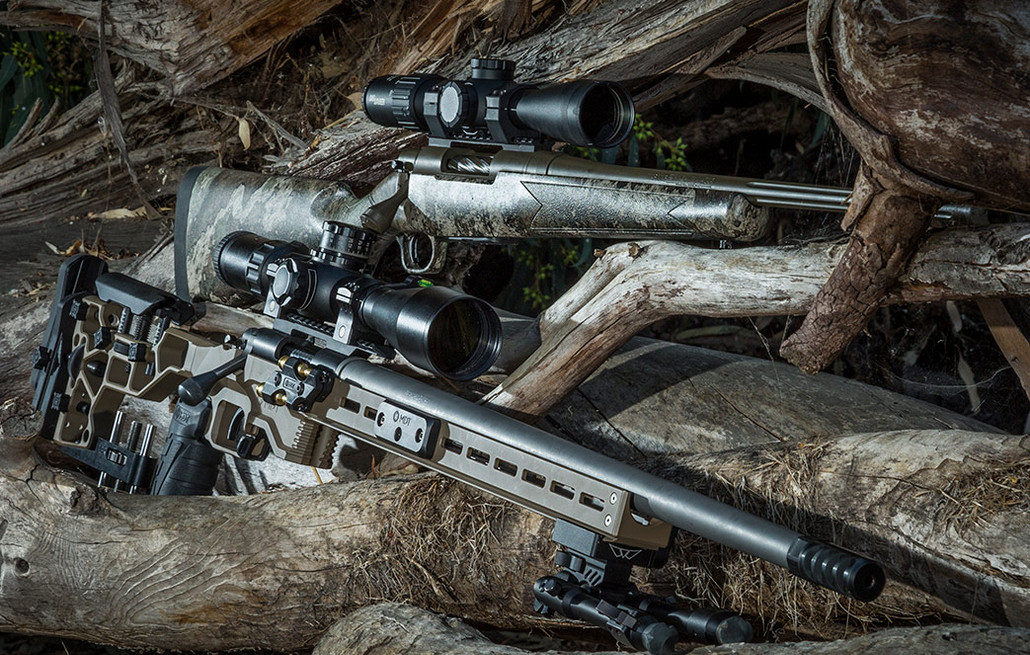
 CAD
CAD
 Euro
Euro
